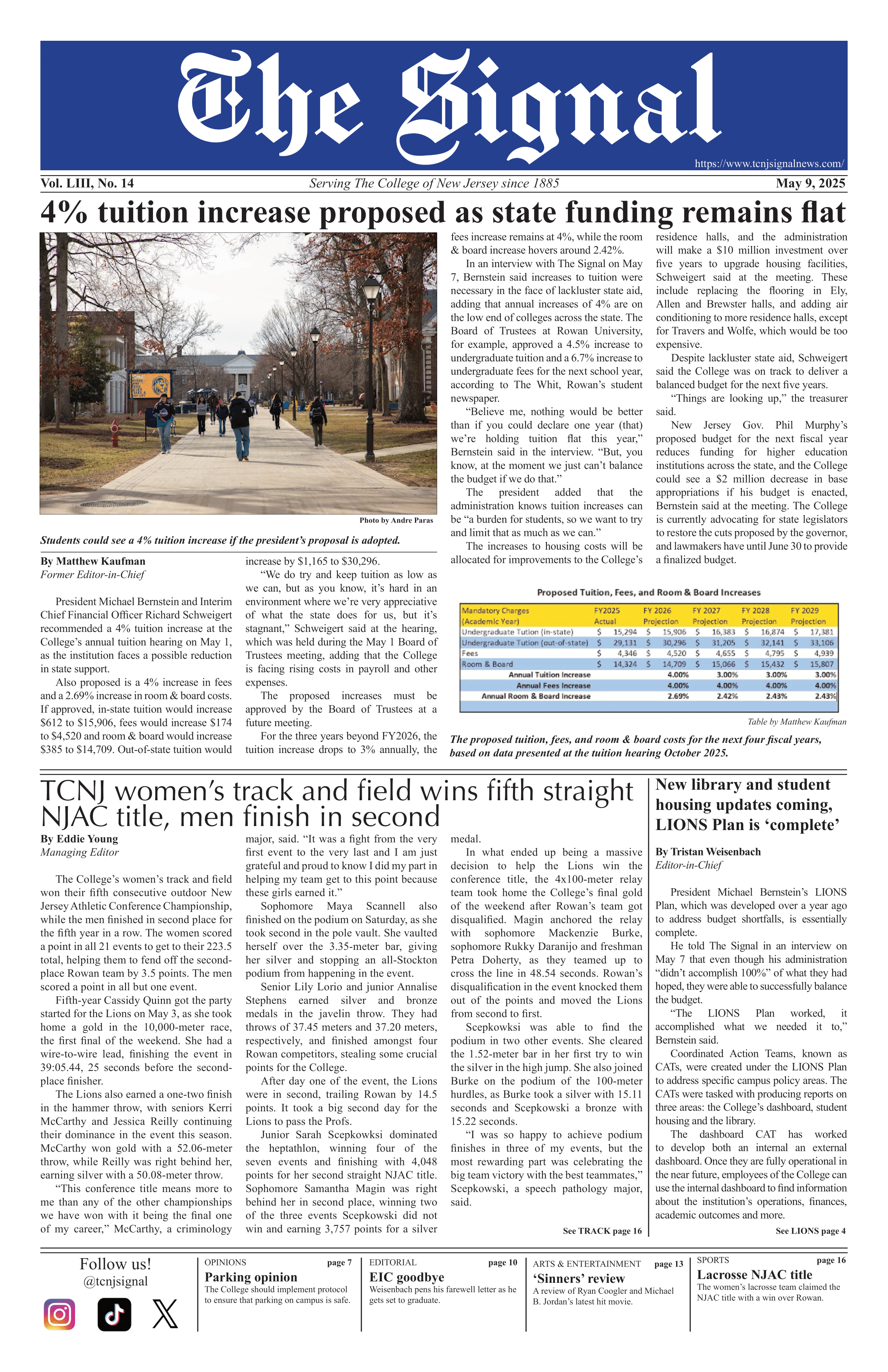By Heidi Cho
Nation & World Editor
The latest seminar hosted by the physics department on Oct. 3 focused its lasers on contemporary nanoparticle technology research.
Alexander Gerakis, an associate research physicist, gave students and faculty a closer look on modern nanoparticle experiments conducted at the Princeton Plasma Physics Laboratory.
The laboratory is home to the Coherent Rayleigh-Brillouin Scattering laser system. CRBS has several functions, but is one of a kind for its ability to obtain a CRBS spectrum in a single laser shot. Consequently, it is able to detect nanoparticles smaller than 10 nanometers, in situ, in an arc discharge, according to Gerakis.
In situ means that the particles do not need to be removed from the chamber they are created in for the laser system to collect data, according to Chris Lovenduski, a sophomore physics major.
Gerakis concluded from research that the single shot CRBS technique employed by the laser system is better than the spontaneous Raleigh technique.

CRBS is also highly localized and non-intrusive, meaning the nanoparticle synthesis isn’t disturbed by the examining method. CRBS generated signal also travels further, allowing the signal to be picked up at greater distances, according to Gerakis.
The speed of the CBRS technique is favorable for researchers.
“It’s boring to stay in the lab for 10 minutes” to collect data on the forming nanostructures in an arc discharge using the spontaneous Raleigh technique, Gerakis said.
The arc discharge in the Princeton lab uses graphite electrodes to synthesize the nanoparticles, according to Gerakis.The laser system then employs the more efficient data gathering technique by using electro-optic crystals to define the frequency of the laser output. It then uses a probe, another laser derived from a single pump, at the nanostructures generated in the arc discharge, according to Gerakis.
The precise frequency tailoring of the machine allows researchers to scan the thermal velocities of the particles populating the optical gratings that the physicist has created and designated. The polarization of the probe is also set to not interfere with other pumps, according to Gerakis.
“The carbon nanostructures that are being created are quickly being destroyed as a result of the intensity of the lasers (Gerakis) is using to conduct his experiments,” Lovenduski said. “That is why (Gerakis) receives a signal, which shows that they are being created, then quickly loses it, which shows that they are being destroyed.”
Gerakis and others can derive the dimensions of the detected nanoparticles from its measured thermal velocity, which is a function of the particle’s mass and temperature.
Lovenduski commented on the significance of the system to further assess nanotechnology.
“Being able to use these new diagnostic laser-based techniques to collect data from these created nanoparticles in situ will be a significant step in better understanding these increasingly useful nanoparticles,” Lovenduski said.
The future of nanotechnology is brighter than the lasers, as it could revolutionize technology and medicine, according to the Princeton Plasma Physics Laboratory.
“Carbon nanotubes in particular are showing a lot of promise for use in almost every industry, from consumer electronics to aerospace,” Lovenduski said.
Carbon nanotubes even outperform the conductivity of copper and other metals, according to IEEE Spectrum.
This could potentially replace all copper wiring and make current technology obsolete. Carbon nanotubes can also be implanted into bodies, and have already been used as dental implants, according to Intercalation of Anti-inflammatory Drug Molecules within TiO2 Nanotubes.
Gerakis’ presentation showed how much closer researchers are to understanding nanotechnology, and the future of humankind as we know it.







